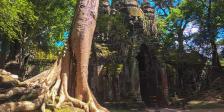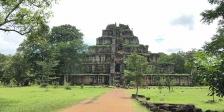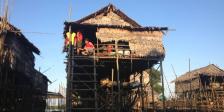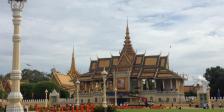Many people visiting Siem Reap and the temples of Angkor often forget to see the other side of town, the side where the Tonle Sap Lake lies. Its many mysteries and diverse biodiversity has led some of the tourists to start exploring beyond the temples and board a boat that leads through villages and a whole different way of life. Birdwatching is one of these activities that can be done at Prek Toal. One hour and a half from Siem Reap, this beautiful boat ride will lead you to the floating village of Prek Toal, which is a sight to behold as well.
The Tonlé sap a Large Fresh water River", but more commonly translated as "Great Lake") is a combined lake and river system of major importance to Cambodia. its a largest freshwater lake in Southeast Asia and is an ecological hot spot that was designated as a UNESCO biosphere in 1997
The Tonlé sap is unusual for two reasons: its flow changes direction twice a year, and the portion that forms the lake expands and shrinks dramatically with the seasons. From November to May, Cambodia's dry season, the Tonlé sap drains into the Mekong River at Phnom Penh. However, when the year's heavy rains begin in June, the Tonlé sap backs up to form an enormous lake.
For most of the year the lake is fairly small—around one metre deep and with an area of 2,700 square kilometres (1,000 sq mi). When water is pushed up from the Mekong into the lake, it increases its area to approximately 16,000 square kilometres (6,200 sq mi), with a depth of nine meters. This expansion floods the nearby fields and forests, providing a great breeding ground for fish.
The Tonlé sap Lake is linked to the sea via the Tonlé sap River, which converges with the massive Mekong River in Phnom Penh. water has always been an important resource for Cambodia, as it is the origin of its creation. According to legend, the Khmer people were colonized in the first centuries by peaceful neighbors from India, and the combination of the two cultures eventually formed the kingdom of Cambodia. Researches have found drawings of fish etched on temple walls in such elaborate details that they could be classified as well as etchings of men with nets. To further highlight the importance of water, Cambodia’s capital city, Phnom Penh, was built at the convergence of the Tonlé sap River and the Mekong River. Still today, the harbor resembles the descriptions recorded by first explorers, and a boat adventure from Phnom Penh is reported to be the best way to explore the river and experience Cambodian culture


 Hot Line: +855 88 7272 445
Hot Line: +855 88 7272 445










.jpg)

